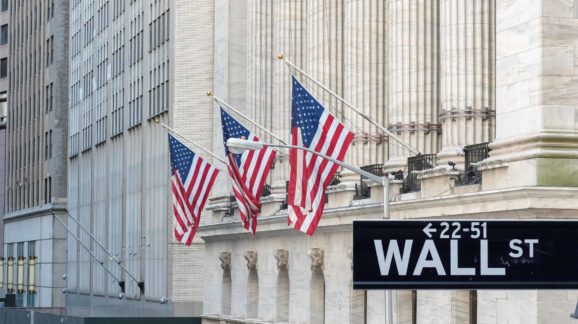Let Middle-Class Investors Join the ‘Accredited’ Club
With the increasing focus on inequality and cronyism on both Left and Right, one would think that politicians and bureaucrats would rush to get rid of any policy that explicitly reserves privileges for the rich.
Yet when it comes to the ability to invest in promising private companies, this is exactly what federal securities law does. Under current rules, an adult must be an “accredited investor” to buy shares of stock in most of these firms. And the sole qualification for becoming “accredited” is being a millionaire or earning hundreds of thousands per year. So only wealthy Americans have the opportunity to grow even wealthier with the startup that could become the next Uber or Facebook.
The “accredited investor” rules have existed for decades and when first implemented actually helped the economy and entrepreneurs. This is because the securities laws of the 1930s were vague as to what constituted a “private offering” not required to register with the Securities and Exchange Commission (SEC), and startups were uncertain as to whether they would face SEC red tape when they raised initial capital. As former Cato Institute scholar Thaya Brook Knight (now Counsel to SEC Commissioner Hester Peirce) has written, “it was initially left to the courts to decide what would qualify.”
With the rationale that wealthy folks were better able to “fend for themselves” if an investment went sour, the SEC in 1982 created the safe harbor in which firms would not have to register if most of its investors were “accredited,” which the SEC defined as having annual income exceeding $200,000 ($300,000 with a spouse), or having a net worth exceeding $1 million. Just as inflation was allowing slightly more investors to enter this “millionaire’s club”in the new millennium, the Dodd-Frank Act of 2010 excluded primary residences from the net worth calculation, ratcheting the wealth threshold even higher.
Through the ‘80s and ‘90s, the “accredited investor” rules had minimal impact on ordinary investors. Most firms still launched initial public offerings (IPOs) as they were growing, after which the stock was freely traded. In the 1990s, 80 percent of IPOs – including those of Starbucks, Cisco Systems, and Amazon – were smaller than $50 million. Middle-class investors who bought shares shortly after these companies went public would share in the wealth as the firms prospered.
What really created the inequality of privilege was ever-growing red tape on public companies that began with the Sarbanes-Oxley Act of 2002, which was rammed through Congress and signed by President George W. Bush in the wake of accounting scandals at Enron and Worldcom. SOX, as it is called, broadly mandated that public companies audit all “internal controls.” By forcing the documenting of this minutiae, SOX quadrupled auditing costs and made it prohibitively expensive for new firms to go public.
Thus, most companies going public today are large, dominant firms. Facebook, for instance, did not go public until it had a market valuation of $104 billion, so wealthy “accredited investors” were the only ones who prospered during its early stages of growth.
Further, the number of public companies on US exchanges is at its lowest point in nearly 50 years. According to Bloomberg, there were just 3600 firms listed at the end of 2017. That’s a lower number than even that for the “bear market” year of 1975, when U.S. publicly traded firms numbered more than 4700. Moreover, this decline is a purely U.S. phenomenon, as foreign stock listings rose 28 percent from 1996 to 2012, according to the National Bureau of Economic Research.
This is an alarming trend, as capital ownership is a central plank of a thriving free-market democracy. It gives people a source of income to complement their work, and a stake in dynamic capitalism and ongoing productivity growth. It’s also a problem, because a greater variety of investment options is not only necessary for economic freedom and choice, but is also crucial to building diversified portfolios that theory and evidence show offer higher returns at lower risk.
Fortunately, there is some good news for middle-class investors and entrepreneurs. The U.S. House of Representatives recently took a step in the right direction by voting almost unanimously to expand the criteria that qualify one as an accredited investor.
The JOBS and Investor Confidence Act, which passed the House in July with a vote of 406-4, provides for registered brokers and investment advisers, as well as those with “demonstrable education or experience” relating to an investment, to meet the “accredited investor” standard to buy shares in private companies.
By providing for greater flexibility when assessing investor sophistication, this bill takes a needed first step to reforming what has become an outdated paternalistic intervention into the economic freedom of Americans.
There are now 4.6 million Americans earning more than $200,000 per year, according to the Census Bureau. According to Federal Reserve surveys, 10.9 million Americans had net worth above $1 million as of 2016. Since the two categories surely overlap, we can be confident that less, and likely far less, than 6 percent of American adults currently qualify as accredited investors.
The bill passed by the House would increase the number of such investors by the 630,000 brokers and advisers presently registered, plus an indeterminate but almost certainly larger number of people with relevant education and experience. This number would vary depending on the activity and sector of the issuing firm, but it would in most cases add millions of prospective individuals to the potential investor base of any private offering.
This JOBS and Investor Confidence Act would increase investment opportunities for millions of Americans, while expanding the pool of capital to which entrepreneurs can appeal for funding.. The Senate should pass it immediately to give the middle class a step up on the ladder of wealth.
Originally published at Forbes.
